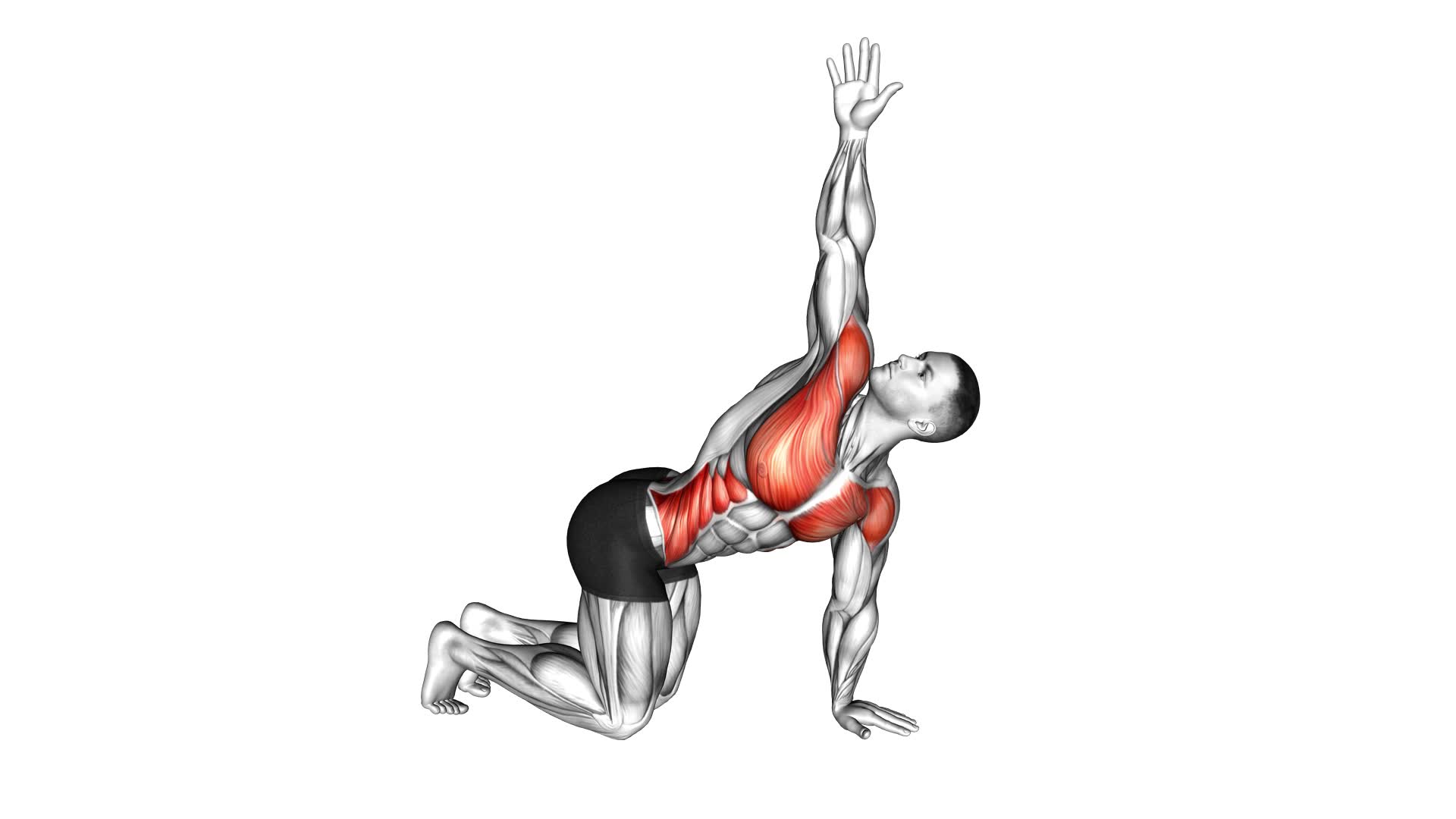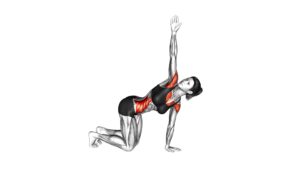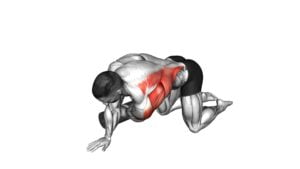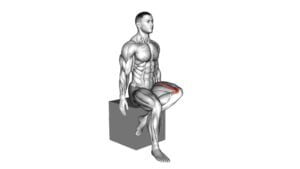Kneeling Back Rotation Stretch – Video Exercise Guide & Tips

Are you looking to improve your flexibility and mobility? Try the Kneeling Back Rotation Stretch!
Watch This Exercise Video
This exercise targets your back muscles and can help relieve tension and improve range of motion. In this video exercise guide, we'll show you the proper technique and provide helpful tips to maximize the effectiveness of the stretch.
Whether you're a beginner or advanced fitness enthusiast, we have modifications and progressions for all fitness levels.
Get ready to feel the benefits of this amazing stretch!
Key Takeaways
- The kneeling back rotation stretch increases flexibility in the spine and relieves tension.
- Proper technique includes maintaining a straight spine, engaging the core, and avoiding jerking or bouncing movements.
- Common mistakes to avoid include rounding the back, using excessive force or momentum, and not maintaining proper form and alignment.
- Modifications and progressions can be made to suit different fitness levels, such as adjusting the range of motion or incorporating resistance bands or weights.
Benefits of the Kneeling Back Rotation Stretch
Experience the numerous benefits of the Kneeling Back Rotation Stretch to improve flexibility and relieve tension in your spine. Incorporating this stretch into your stretching routine can have a significant impact on your flexibility training.
One of the main benefits of the Kneeling Back Rotation Stretch is its ability to increase flexibility in your spine. As you rotate your back, you're gently stretching the muscles and ligaments along your spine, promoting overall flexibility and range of motion. This can be particularly beneficial for those who experience tightness or stiffness in their back.
Additionally, this stretch can help to relieve tension in your spine. By rotating your back in a controlled manner, you're able to release any built-up tension or stress that may have accumulated throughout the day. This can provide immediate relief and promote a sense of relaxation and well-being.
Incorporating the Kneeling Back Rotation Stretch into your flexibility training can also improve your posture. By stretching the muscles in your back and spine, you can strengthen your core and improve your overall alignment. This can help to alleviate back pain and prevent future injuries.
Proper Technique for Performing the Stretch
To properly perform the Kneeling Back Rotation Stretch, follow these steps.
- Start by kneeling on the ground with your knees hip-width apart.
- Place your hands on your hips or cross them in front of your chest.
- Keep your spine straight and engage your core muscles.
- Slowly rotate your torso to the right, allowing your right hand to reach towards the floor behind you.
- Avoid any jerking or bouncing movements and maintain a controlled and smooth rotation.
- Hold this position for 10-15 seconds, feeling a gentle stretch in your lower back and spine.
- Return to the starting position and repeat the stretch on the left side.
- Remember to breathe deeply and relax your shoulders throughout the exercise.
Performing the Kneeling Back Rotation Stretch regularly can help prevent back pain by improving spinal mobility. This stretch targets the muscles in your lower back, promoting flexibility and reducing tension.
It's important to perform the stretch with proper technique to maximize its benefits and minimize the risk of injury.
Common Mistakes to Avoid
Avoid these common mistakes when performing the Kneeling Back Rotation Stretch to ensure proper technique and maximize its benefits.
It's important to maintain proper form throughout this exercise to prevent injury and achieve optimal results. One common mistake to avoid is rounding your back during the rotation. This can put unnecessary strain on the spine and decrease the effectiveness of the stretch. Instead, focus on keeping your back straight and tall throughout the movement.
Another mistake to watch out for is using excessive force or momentum to rotate your upper body. This can lead to overstretching and potential muscle strains. Instead, start the rotation slowly and use controlled movements to ensure a safe and effective stretch.
Additionally, be mindful of your breathing during the stretch. Holding your breath can create tension in the body and limit the stretch's effectiveness. Remember to breathe deeply and exhale as you rotate to promote relaxation and proper muscle engagement.
Modifications and Progressions for All Fitness Levels
To modify or progress the Kneeling Back Rotation Stretch for all fitness levels, you can adjust the range of motion or add resistance to challenge your muscles further. Here are some modifications and progressions you can try:
- Decrease or increase the range of motion: If you find it difficult to rotate your upper body fully, you can start by rotating only halfway and gradually increase the range of motion as you become more flexible. On the other hand, if you want to make the stretch more challenging, rotate your upper body even further, pushing your limits.
- Use a resistance band: To add resistance and intensify the stretch, you can hold a resistance band with both hands. As you rotate your upper body, the band will provide resistance, engaging your muscles more effectively.
- Incorporate weights: Another way to progress the stretch is by holding a dumbbell or kettlebell in your hands while performing the rotation. The added weight will increase the challenge and help strengthen your muscles.
- Try kneeling on an unstable surface: By kneeling on a stability ball or foam pad, you'll engage more stabilizer muscles, making the stretch more challenging and beneficial for core strength and stability.
By modifying the range of motion or adding resistance, you can tailor the Kneeling Back Rotation Stretch to suit your fitness level and goals.
Now, let's move on to some tips for maximizing the effectiveness of the stretch.
Tips for Maximizing the Effectiveness of the Stretch
To maximize the effectiveness of the stretch, focus on maintaining proper form and breathing throughout the exercise. When performing the kneeling back rotation stretch, it's important to breathe deeply and consciously. Take slow, controlled breaths in through your nose, and exhale fully through your mouth. This will help to oxygenate your muscles and promote relaxation, enabling you to achieve a deeper stretch.
Additionally, it's essential to incorporate the kneeling back rotation stretch into your workout routine properly. Start by warming up your body with some light cardio exercises, such as jogging or jumping jacks, to increase blood flow to your muscles. Then, perform dynamic stretches to prepare your body for the kneeling back rotation stretch.
After completing the stretch, cool down with some static stretches to prevent muscle soreness and promote flexibility.
To ensure you're getting the most out of this stretch, remember to maintain proper spinal alignment and engage your core muscles throughout the exercise. Avoid any jerky or sudden movements, and focus on moving smoothly and fluidly.
Precautions and Safety Considerations
When performing the kneeling back rotation stretch, it's important to prioritize safety and take necessary precautions to prevent injury. Here are some key considerations to keep in mind:
- Warm up before starting: It's crucial to prepare your body for stretching exercises. Engage in a light warm-up routine that includes cardiovascular exercises like jogging or jumping jacks to increase blood flow and warm up your muscles.
- Use proper form: Maintain good posture throughout the stretch to avoid straining your back or neck. Keep your spine straight and your core engaged. Avoid any jerky or sudden movements that could cause injury.
- Start slowly and gradually increase intensity: Begin with gentle rotations, gradually increasing the range of motion as your body becomes more flexible. Listen to your body and stop if you feel any pain or discomfort.
- Avoid overstretching: While it's important to challenge yourself, be cautious not to push beyond your limits. Overstretching can lead to muscle strains or other injuries. Take it slow and gradually increase the intensity over time.
Frequently Asked Questions
How Long Should I Hold the Kneeling Back Rotation Stretch?
To get the most out of the kneeling back rotation stretch, it's important to hold the stretch for an appropriate amount of time. The duration of the stretch depends on your comfort level and flexibility.
Start by holding the stretch for 15-30 seconds and gradually increase the time as you become more comfortable. This stretch can be modified for beginners by reducing the range of motion and using a support like a yoga block.
The kneeling back rotation stretch is great for relieving back pain and improving flexibility.
Can I Perform the Stretch if I Have a History of Back Injuries?
Yes, you can perform the kneeling back rotation stretch even if you have a history of back injuries. However, it's important to proceed with caution and listen to your body.
Start by consulting with a healthcare professional or a qualified trainer to ensure this stretch is appropriate for your specific condition. Additionally, there may be modifications available to accommodate limited hip mobility, allowing you to safely perform the exercise.
Is It Necessary to Warm up Before Doing the Kneeling Back Rotation Stretch?
Before performing the kneeling back rotation stretch, it's important to warm up your body. Warming up helps increase blood flow and flexibility, reducing the risk of injury. It prepares your muscles and joints for the stretch, making it more effective.
If you have a history of back injuries, it's crucial to modify the stretch to avoid any discomfort or strain. Consult with a professional or physical therapist for specific modifications that suit your condition.
Can I Perform the Stretch if I Have Limited Mobility in My Hips?
If you have limited mobility in your hips, there are modifications you can make to perform the kneeling back rotation stretch.
It's important to adjust the stretch to your comfort level and avoid any pain. You can try using a pillow or folded towel under your knees for added support.
Additionally, you can decrease the range of motion and focus on gentle movements.
Always listen to your body and consult with a healthcare professional if needed.
How Often Should I Incorporate the Kneeling Back Rotation Stretch Into My Workout Routine?
To effectively incorporate the kneeling back rotation stretch into your workout routine, it's important to consider your fitness goals and overall flexibility. This stretch can help improve spinal mobility and loosen up tight muscles in your back.
Start by performing it a few times a week and gradually increase the frequency as your body adapts. Remember to listen to your body and not overdo it, as consistency is key for seeing results.
Conclusion
In conclusion, the kneeling back rotation stretch is a beneficial exercise that helps improve flexibility and mobility in the spine.
By following the proper technique and avoiding common mistakes, individuals can safely perform this stretch.
Modifications and progressions are available for individuals of all fitness levels.
By maximizing the effectiveness of the stretch and considering safety precautions, individuals can achieve optimal results.
Incorporating this stretch into a regular exercise routine can greatly enhance overall flexibility and range of motion.

Author
Years ago, the spark of my life’s passion ignited in my mind the moment I stepped into the local gym for the first time. The inaugural bead of perspiration, the initial endeavor, the very first surge of endorphins, and a sense of pride that washed over me post-workout marked the beginning of my deep-seated interest in strength sports, fitness, and sports nutrition. This very curiosity blossomed rapidly into a profound fascination, propelling me to earn a Master’s degree in Physical Education from the Academy of Physical Education in Krakow, followed by a Sports Manager diploma from the Jagiellonian University. My journey of growth led me to gain more specialized qualifications, such as being a certified personal trainer with a focus on sports dietetics, a lifeguard, and an instructor for wellness and corrective gymnastics. Theoretical knowledge paired seamlessly with practical experience, reinforcing my belief that the transformation of individuals under my guidance was also a reflection of my personal growth. This belief holds true even today. Each day, I strive to push the boundaries and explore new realms. These realms gently elevate me to greater heights. The unique combination of passion for my field and the continuous quest for growth fuels my drive to break new ground.







